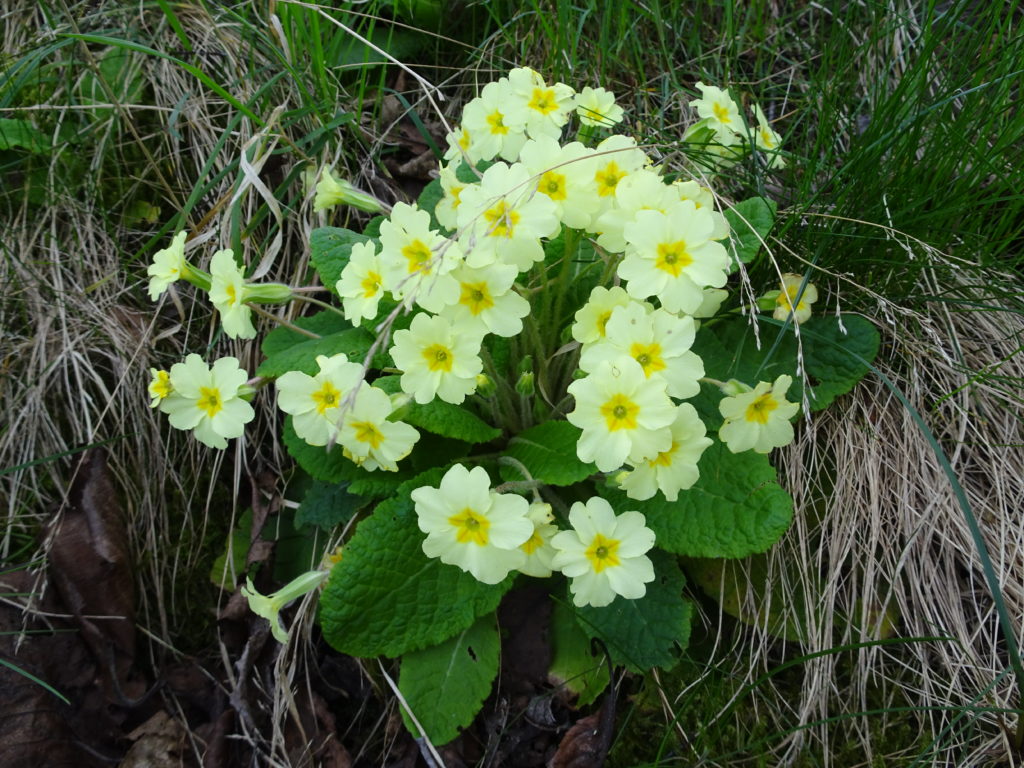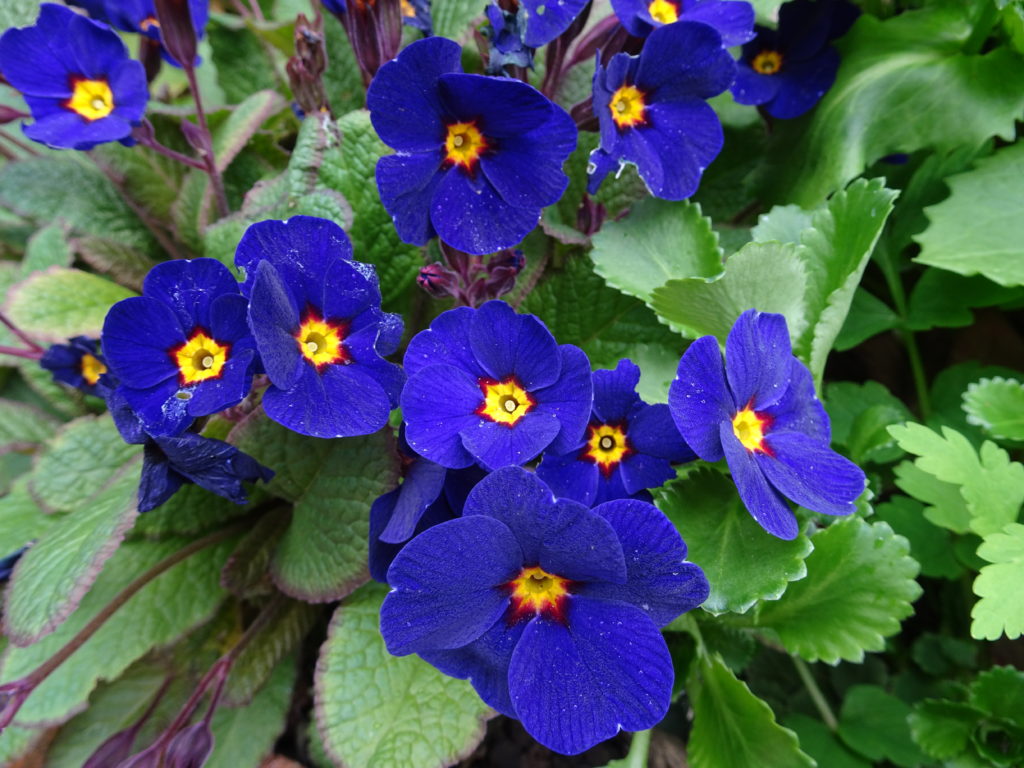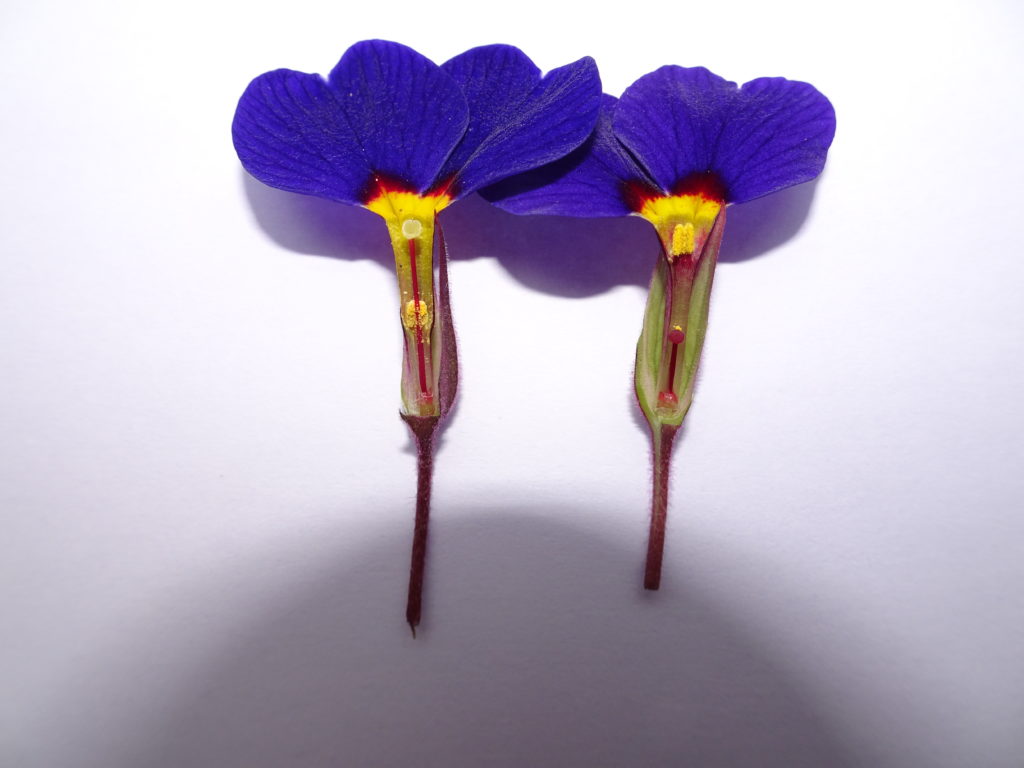The primrose, Primula vulgaris, is one of the most evocative and widely-known heralds of spring. If you are lucky enough to know a wild place where this beautiful native plant grows now is the time to pay a visit, bearing in mind the restrictions on travel we all have to observe. Although the wild primrose, with its stunning pale yellow blooms, is somewhat elusive, the domesticated primrose is a popular garden plant that comes in a rainbow selection of colour forms and it too is also now in full bloom.

The origins of the kaleidoscopic colours we see in garden primroses can be traced back to the activities of plant breeders and the genetic contribution of other closely related Primula species that can be hybridised with our native primrose. In the East Balkan Peninsula a subspecies of Primula vulgaris (ssp. sibthorpii) is found that has flowers ranging in colour from pink to red and magenta. Further diversity of colour has been derived from Primula juliae from the Caucasus that has deep blue-magenta flowers.

If you look closely at the centre of primrose flowers you will notice two distinctly different arrangements of reproductive organs. To see this you need to check several plants as each individual plant is consistently of one form and you will never find both forms on a single plant. In pin-eyed flowers there is a visible single structure – the stigma – which is the female part that receives pollen. In thrumb-eyed flowers the stigma is replaced by a ring of five yellow structures – anthers – which are the male parts and will often contain visible dust-like pollen. You might think that the “pins” are female flowers and the “thrumbs” are male flowers, but in fact all flowers have both sexes, it’s just that the second sex is positioned further down the tube and is, therefore, out of sight.
The reason for these two flower forms is that it is a mechanism to encourage cross pollination between different individual plants. Charles Darwin was one of the first to experimentally investigate how “pins” and “thrumbs” interact together. If you want to know more have a look at his published account at Darwin Online. What is going on here is that pollen from “pins” is needed to pollinate “thrumbs” and vice versa.

To see for yourself you can carefully pull the flowers apart to reveal the hidden stigma and anthers in each flower form. Looking at the relative position of these structures in the tubular part of the flower it is easy to see that the cross-compatible pairings are between male and female structures at the same position in the tube. When the long mouthparts of insects probe into the tube searching for nectar they pick up pollen and then transfer the right kind of pollen to the appropriate kind of stigma when they move to subsequent plants.
An intriguing aspect of the primrose is what insects are actually responsible for pollination of its flowers? If you watch primroses you almost never see insects visiting the flowers, even when there are plenty of what could be potential pollinators about. This same conundrum was observed by Charles Darwin who had this to say about it:
“I have watched Primroses more attentively during several years, and have never seen an insect visit them; yet from their close similarity in all essential respects to Cowslips, there can hardly be a doubt that they require the visits of insects. Hence I am led to suppose that both Primroses and Cowslips are visited by moths. All the species which I have examined secrete plenty of nectar.” Charles Darwin (1862), from On the two forms, or dimorphic condition, in the species of Primula, and on their remarkable sexual relations.
Any observation on insects visiting primroses, nocturnal or otherwise, would be really interesting to hear about. Also, do share your images of any seasonal plant interest with #plantrainbow. To see what is happening in the RBGE’s four gardens follow Virtual Spring on our website and on social media with #VirtualSpring
